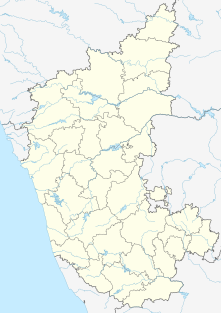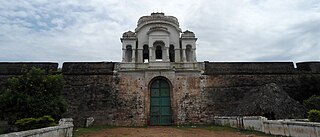
The Middle kingdoms of India were the political entities in India from the 3rd century BCE to the 13th century CE. The period begins after the decline of the Maurya Empire and the corresponding rise of the Satavahana dynasty, starting with Simuka, from 230 BCE. The "Middle" period lasted for about 1,500 years and ended in the 13th century, with the rise of the Delhi Sultanate, founded in 1206, and the end of the Later Cholas.

Chakravarti Kulottunga Choladeva was an 11th-century monarch of the Chola Empire of South India. He was one of the sovereigns who bore the title "Kulottunga", literally meaning "the exalter of his race" in Tamil. He did not belong to the main line of Cholas but was rather a prince of the Eastern Chalukya dynasty. His mother, Ammangaidevi, was a Chola princess and the daughter of emperor Rajendra Chola I. His father was king Rajaraja Narendra of the Eastern Chalukya dynasty who was the nephew of Rajendra Chola I and maternal grandson of Rajaraja Chola I. According to historian Sailendra Nath Sen, his accession marked the beginning of a new era and ushered in a period of internal peace and benevolent administration.

Mahendravarman I was a Pallava king who ruled the Southern portion of present day Andhra region and Northern regions of what forms present-day Tamil Nadu in India in the early 7th century. He was a scholar, painter, architect, musician. He was the son of Simhavishnu, who defeated the Kalabhras and re-established the Pallava kingdom.

Saundatti also known as Savadatti is one of the oldest towns in Belgaum district in the Indian state of Karnataka. It is a celebrated pilgrimage centre located 78 kilometres from Belgaum and 37 kilometres from Dharwad. Savadatti is also the name of the taluk (sub-district), which was previously named Parasgad. There are several ancient temples in Saudatti.

Vikramaditya VI became the Western Chalukya King after deposing his elder brother Someshvara II, a political move he made by gaining the support of Chalukya vassals during the Chola invasion of Chalukya territory. Vikramaditya's reign is marked with the abolishment of the Saka era and the start of the Chalukya-Vikrama era. He was the greatest of the Western Chalukya kings and had the longest reign in the dynasty. He earned the title Permadideva and Tribhuvanamalla. He had several queens who ably assisted him in administration. One of his queens, Chandala Devi, a princess from the Shilahara ruling family of Karad was called Abhinava Saraswati for her skills as an artist. Queen Kethala Devi administered the Siruguppa region and Savala Devi was in charge of an Agrahara in Naregal. According to the historian Kamath, Vikramaditya VI was a "great king who ruled over South India" and he finds a "pride of place in Karnataka history". More inscriptions in Kannada are attributed to Vikramaditya VI than any other king prior to the Vijayanagara era.

The Vishnukundina dynasty was an Indian imperial power controlling the Deccan, Andhra Pradesh, Telangana, Odisha and parts of South India during the 5th and 6th centuries, carving land out from the Vakataka Empire. It played an important role in the history of the Deccan during the 5th and 6th centuries. The dynasty initially ruled from Indrapalanagara, and later shifted to Denduluru, and Amaravathi.

Rajendra Chola II reigned as the Chola king succeeding his elder brother Rajadhiraja Chola in the 11th century. He is best remembered for his role in the battle of Koppam along with his elder brother where he dramatically turned the tables on the Chalukyan King Someshvara I, after the death of his brother in 1052. During his early reign an expedition was led to Sri Lanka, in the course of which the Sri Lanka army was routed and their king Vijayabahu I of Polonnaruwa was driven to take refuge in a mountain-fortress. He maintained the Chola Empire well as the distribution of his records show that the Chola Empire did not suffer any loss of territory during his reign.

The Later Chola dynasty ruled the Chola Empire from 1070 C.E. until the demise of the empire in 1279 C. E. This dynasty was the product of decades of alliances based on marriages between the Cholas and the Eastern Chalukyas based in Vengi and produced some of the greatest Chola emperors such as Kulothunga Chola I. Even though the later Cholas are often referred to as Chalukya Cholas, there were two breaks in the line. Kulothunga Chola II and Rajadhiraja Chola II did not belong to the Chalukya Chola line. Kulottunga II was a grandson of Vikrama Chola and Rajadhiraja Chola II was not the son of Rajaraja Chola II.
The Telugu Chodas or Telugu Cholas ruled parts of present-day Andhra Pradesh between the sixth and the thirteenth century.

Eastern Chalukyas, also known as the Chalukyas of Vengi, were a dynasty that ruled parts of South India between the 7th and 12th centuries. They started out as governors of the Chalukyas of Badami in the Deccan region. Subsequently, they became a sovereign power, and ruled the Vengi region of present-day Andhra Pradesh until c. 1130 CE. They continued ruling the region as feudatories of the Cholas until 1189 CE.

Jayasimha II succeeded his brother Vikramaditya V on the Western Chalukya throne. He had to fight on many fronts, against the Cholas of Tanjore in the south and the Paramara dynasty in the north, to protect his kingdom. His rule however was an important period of development of Kannada literature. The Brahmin Kannada writers Durgasimha, Chavundaraya II and Kavitavilasa were in his patronage. Chandraraja, a Brahmin writer on erotics was in the court of Machiraja, a vassal of Jayasimha II. The Jain Sanskrit scholar Vadiraja was in Jayasimha II's court and wrote two epics, on logic, and a commentary on an earlier Jain text. His queen Suggaladevi was a disciple of the Kannada saint-poet Devara Dasimayya.

The Western Chalukya Empire ruled most of the western Deccan, South India, between the 10th and 12th centuries. This Kannadiga dynasty is sometimes called the Kalyani Chalukya after its regal capital at Kalyani, today's Basavakalyan in the modern Bidar District of Karnataka state, and alternatively the Later Chalukya from its theoretical relationship to the 6th-century Chalukya dynasty of Badami. The dynasty is called Western Chalukyas to differentiate from the contemporaneous Eastern Chalukyas of Vengi, a separate dynasty. Prior to the rise of these Chalukyas, the Rashtrakuta empire of Manyakheta controlled most of Deccan and Central India for over two centuries. In 973, seeing confusion in the Rashtrakuta empire after a successful invasion of their capital by the ruler of the Paramara dynasty of Malwa, Tailapa II, a feudatory of the Rashtrakuta Dynasty ruling from Bijapur region defeated his overlords and made Manyakheta his capital. The dynasty quickly rose to power and grew into an empire under Someshvara I who moved the capital to Kalyani.
Velanati Cholas were one of the Chola families who ruled over parts of the Andhra Pradesh in the 12th century. They were Vassals of Later Cholas and Western Chalukyas and ruled over the region of Kammanadu in modern Guntur district.

Andhra Pradesh is one of the 28 states of India whose recorded history begins in the Vedic period. It is mentioned in Sanskrit epics such as Aitareya Brahmana. The Assaka Mahajanapada was an ancient kingdom located between the Godavari and Krishna Rivers in southeastern India.

The Eastern Ganga dynasty also known as Rudhi Gangas or Prachya Gangas were a medieval Indian dynasty that reigned from Kalinga from as early as the 5th century to the early 15th century. The territory ruled by the dynasty consisted of the whole of the modern-day Indian state of Odisha as well as parts of Andhra Pradesh and Chhattisgarh. The early rulers of the dynasty ruled from Dantapura; the capital was later moved to Kalinganagara, and ultimately to Kataka. Today, they are most remembered as the builders of the world renowned Puri Jagannath Temple and Konark Sun Temple, a UNESCO World Heritage site at Konark, Odisha.

Vizianagaram State was a zamindari of the Madras Presidency in India. The estate acceded to the Indian Union in 1949.

The Chalukya dynasty was a Classical Indian royal dynasty that ruled large parts of southern and central India between the 6th and the 12th centuries. During this period, they ruled as three related yet individual dynasties. The earliest dynasty, known as the "Badami Chalukyas", ruled from Vatapi from the middle of the 6th century. The Badami Chalukyas began to assert their independence at the decline of the Kadamba kingdom of Banavasi and rapidly rose to prominence during the reign of Pulakeshin II. After the death of Pulakeshin II, the Eastern Chalukyas became an independent kingdom in the eastern Deccan. They ruled from Vengi until about the 11th century. In the western Deccan, the rise of the Rashtrakutas in the middle of the 8th century eclipsed the Chalukyas of Badami before being revived by their descendants, the Western Chalukyas, in the late 10th century. These Western Chalukyas ruled from Kalyani until the end of the 12th century.
Kondapadumati is the name of a medieval dynasty that resided in the modern day state of Andhra Pradesh, India. They held the Kondapadumati or Sallapaschalya Vishaya, the country to the west of the Kondavidu range of hills, corresponding to the eastern portion of Sattenapalla Talug for one and a half centuries. They had their capital at Nadendla not far from Tsandavole, the Velanadu capital. They started off as subordinates to the Chalukya Cholas. The Kondapadumatis secured an important military success over the Kalinga and the Telugu Chodas and were allied to the Velanadu Chodas by marriages. A branch of the Kondapadumatis are the Kotas.
The Chalukyas of Vemulavada were an Indian dynasty that ruled in and around the present-day Telangana between 7th and 10th centuries. Their capital was located at Vemulavada, and they were vassals of the Rashtrakutas.
Baddega, who assumed the title Solada-gaṇḍa, was an Indian ruler from the Vemulavada Chalukya dynasty. He was a vassal of the Rashtrakuta king Krishna II, and participated in Krishna's unsuccessful invasions of the Vengi Chalukya kingdom.













